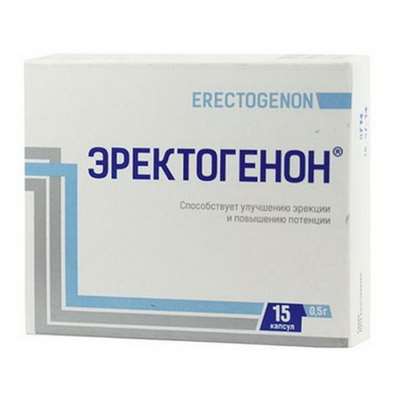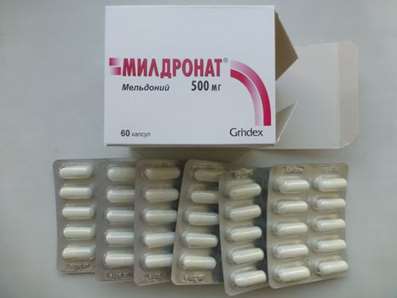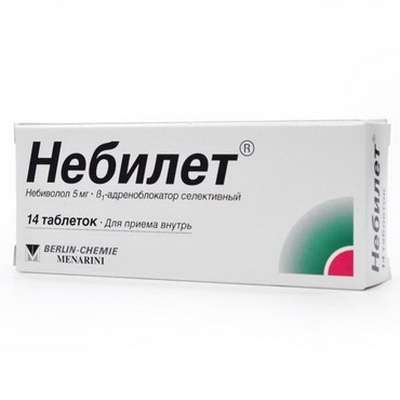Phezam (Cinnarizine + Piracetam) tablets - Instructions for Use, Dosage, Side Effects, Reviews
17 Mar 2017
Active substance: Cinnarizine + Piracetam
ATC - N06BX Other psychostimulants and nootropics.
Pharmacological group - Nootropics in combinations.
Cinnarizine is a medication derivative of piperazine, and characterized as an antihistamine and a calcium channel blocker, it is also known to promote cerebral blood flow, and so is used to treat cerebral apoplexy, post-trauma cerebral symptoms, and cerebral arteriosclerosis. However, it is more commonly prescribed for nausea and vomiting due to motion sickness or other sources such as chemotherapy, vertigo, or Ménière's disease.
Piracetam is a nootropic drug in the racetams group, with chemical name 2-oxo-1-pyrrolidine acetamide. It shares the same 2-oxo-pyrrolidone base structure with pyroglutamic acid. Piracetam is a cyclic derivative of GABA (gamma-Aminobutyric acid).
You can buy Phezam.
Nosological classification (ICD–10)
F09 organic or symptomatic mental disorder, unspecified;
F79 Mental retardation, unspecified;
G43 Migraine;
G93.4 Encephalopathy, unspecified;
H81.0 Meniere’s Disease;
H81.4 Vertigo of central origin;
I67.2 Cerebral atherosclerosis;
I67.9 Cerebrovascular disease, unspecified;
I69 Effects of cerebrovascular diseases;
R41.8.0 * Disorders Intellectual mnestic;
S06 intracranial injury;
T75.3 Motion sickness motion;
T96 Effects of poisoning by drugs, medicaments and biological substances.
Phezam (Cinnarizine + Piracetam) Composition, structure and packing
Hard gelatin capsules, size number 0, cylindrical, white contents of capsules - powder mixture from white to almost white, tolerance of conglomerates, which when pressed with a glass rod are easily converted into powder.
Capsules 1 caps.
piracetam 400 mg
cinnarizine 25 mg
Phezam (Cinnarizine + Piracetam) Pharmacological action
Antihypoxic, nootropic, vasodilator.
Combination drug with severe hypoxic, neuroprotective and vasodilatory action. Components mutually potentiate resistance reduction of cerebral blood vessels and enhances blood flow in them.
Piracetam - nootropic agent. Activates the metabolic processes in the brain by enhancing the energy and protein metabolism, accelerate the utilization of glucose by cells and increase their resistance to hypoxia. Improves interneuronal transmission in the CNS and regional blood flow in the ischemic area.
Cinnarizine - a selective blocker of the slow calcium channel antagonist of the histamine H 1 receptor. It has been established that it inhibits entry of calcium ions into cells and reduces their content in the depot plasmolemma. Reduces the tone of smooth muscles of arterioles reduces their reactions to biogenic vasoconstrictors (catecholamines, angiotensin and vasopressin). Has vasodilator effect (particularly with regard to brain vessels, increasing antihypoxia action piracetam) without significant effect on blood pressure. Exhibits moderate antihistaminic activity, reduces the excitability of the vestibular apparatus, increases the tone of the sympathetic nervous system. Enhances the elasticity of the erythrocyte membranes and their ability to deform, reducing blood viscosity.
Pharmacokinetics
Absorption
After ingestion of the drug is completely absorbed from the gastrointestinal tract.
Cmax piracetam in plasma is created in 2–6 hours Bioavailability piracetam is 100%.
Slow absorption of cinnarizine. Cmax cinnarizine plasma achieved in 1–4 hours
Distribution
Piracetam does not bind to plasma proteins. The apparent V d is about 0.6 liter/kg. Piracetam easily penetrates through the BBB. Cmax piracetam in CSF achieved in 2–8 hours to penetrate all organs and tissues, crosses the placental barrier. Selectively accumulates in the cerebral cortex, primarily in the frontal, parietal, and occipital lobes, cerebellum, and basal ganglia.
Binding of cinnarizine to plasma proteins is 91%.
Metabolism
Piracetam is not metabolized.
Cinnarizine actively and completely metabolized in the liver by dealkylation with the participation of isoenzyme CYP2D6.
Breeding
T1/2 of piracetam from plasma is 4–5 hours, from cerebrospinal fluid - 8.5 h 80–100% piracetam excreted by the kidneys unchanged by renal filtration. Renal clearance of piracetam in healthy volunteers is 86 ml/min.
T1/2 of cinnarizine - 4 hrs third metabolites excreted in the urine, 2/3 - with feces.
Pharmacokinetics in special clinical situations
T1/2 piracetam lengthened in renal failure. Pharmacokinetics of piracetam is not changed in patients with hepatic insufficiency. Penetrates through the filter membrane devices for hemodialysis.
Phezam (Cinnarizine + Piracetam) Dosage
Adult drug appoint 1–2 caps. 3 times/day for 1–3 months depending on the severity of the disease. The course of treatment - 2–3 times a year.
Children older than 5 years are prescribed 1–2 caps. 1–2 times/day. The course of treatment - 1.5–3 months.
Phezam (Cinnarizine + Piracetam) Overdose
Phezam well tolerated by patients, in case of overdose is not observed serious side effects requiring discontinuation of the drug.
Symptoms: Abdominal pain.
Treatment: gastric lavage should be carried out, induce vomiting, symptomatic therapy, if necessary - hemodialysis. No specific antidote.
Phezam (Cinnarizine + Piracetam) Drug Interactions
While the use of the drug may increase Phezam sedation depressants CNS activity, tricyclic antidepressants, as well as ethanol.
Phezam potentiates the effect of neuroprotective and anti-hypertensive agents.
With simultaneous use of vasodilators enhance the action of the drug.
Phezam improves tolerability of antipsychotic drugs and tricyclic antidepressants.
Phezam (Cinnarizine + Piracetam) at Pregnancy and lactation
Despite the lack of evidence of a teratogenic effect of piracetam and cinnarizine Phezam contraindicated during pregnancy.
Piracetam is excreted in breast milk, so if necessary, use during lactation breastfeeding should be discontinued.
Phezam (Cinnarizine + Piracetam) Side effects
The nervous system: hyperkinesia, nervousness, drowsiness, depression, and in rare cases - dizziness, headache, ataxia, impaired balance, insomnia, confusion, agitation, anxiety, hallucinations.
Allergic reactions: rarely - a skin rash, dermatitis, pruritus, edema, photosensitivity.
From the digestive system: in some cases - increased salivation, nausea, vomiting, diarrhea, abdominal pain.
Other: increased sexual activity.
Phezam (Cinnarizine + Piracetam) Indications
Cerebral circulatory insufficiency (atherosclerosis brain recovery period of ischemic and hemorrhagic strokes, after traumatic brain injury, encephalopathy various origins);
Intoxication;
CNS diseases associated with decreased intellectual-mental functions (memory impairment, attention, mood);
Condition after suffering a traumatic brain injury;
Psycho-organic syndrome with predominance of symptoms of fatigue and adinamii;
Asthenic syndrome of psychogenic origin;
Labirintopatii (vertigo, tinnitus, nausea, vomiting, nystagmus);
Meniere’s syndrome;
Prevention kinetoses;
Prevention of migraine;
As part of combination therapy with low learning in children with psycho-organic syndrome.
Phezam (Cinnarizine + Piracetam) Contraindications
Severe renal insufficiency (creatinine clearance <20 mL/min);
Severe hepatic impairment;
Psychomotor agitation at the time of administration of the drug;
Huntington’s chorea;
Pregnancy;
Lactation (breastfeeding);
Children up to age 5 years;
Hypersensitivity to the drug.
Precautions should be prescribed the drug for Parkinson’s disease, disorders of the liver and/or kidney disease, disorders of hemostasis, severe bleeding.
Phezam (Cinnarizine + Piracetam) Cautions
With caution used in patients with liver and/or kidneys.
In renal insufficiency, mild to moderate (creatinine clearance less than 60 ml/min) should reduce the therapeutic dose or increase the interval between doses of the drug.
In patients with impaired liver function is necessary to monitor liver enzymes.
Patients should avoid alcohol while taking Phezam.
The drug increases the activity of thyroid hormones and can cause tremors and anxiety.
Effects on ability to drive vehicles and management mechanisms
During treatment Phezam patients should exercise caution when driving and operating machinery and equipment, as early treatment may cause drowsiness cinnarizine.
Phezam (Cinnarizine + Piracetam) Reviews
Nataly, 45 years, I would like to share feedback about nootropics Phezam from the words of my mother in law, as a means to justify its expectations. My mother in law is now retired and itself at this age have problems with memory and attention, although it is recommended for other age groups, including children.
After a routine examination doctors recommended and appointed her Fezam, the drug improves memory and attention. He also has a positive effect on the overall condition of the brain when ported injuries and as prevention of migraine headaches by improving circulation.
Apply it is possible in other diseases of the central nervous system, that the retirement age is very important.
In general, means Phezam my mother-happy and takes it a few times a year.
Mary, 37 years, Aunt is very responsive to changes in temperature on the street, on the weather conditions. She had a weakness, headache, and poor overall health.
After she Phezam cutting some time, she became a lot better!
She advises to receive the drug.

 Cart
Cart





